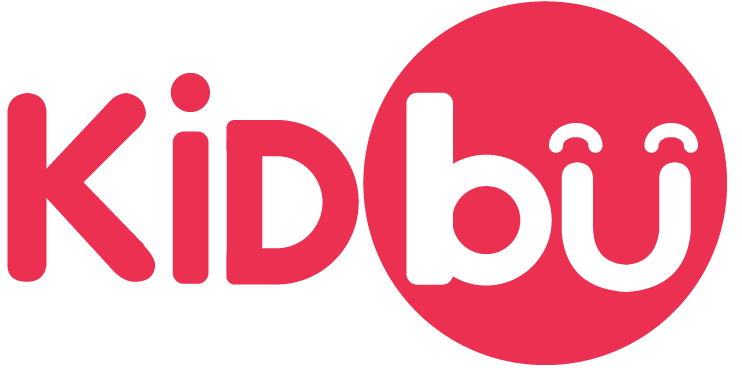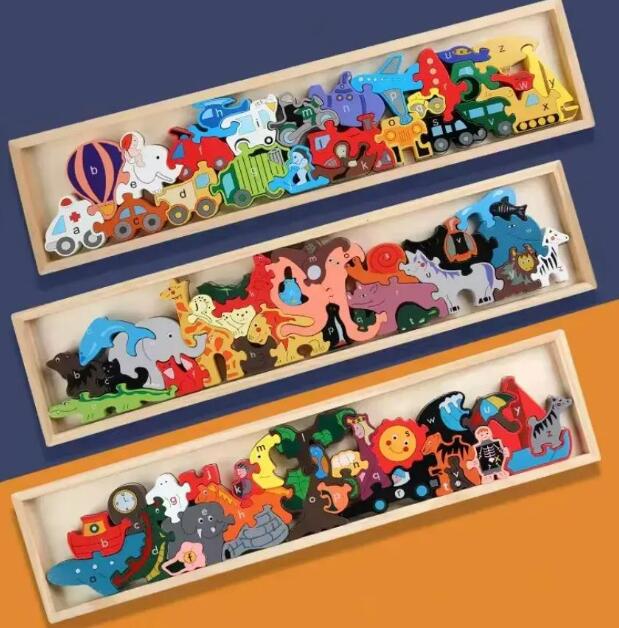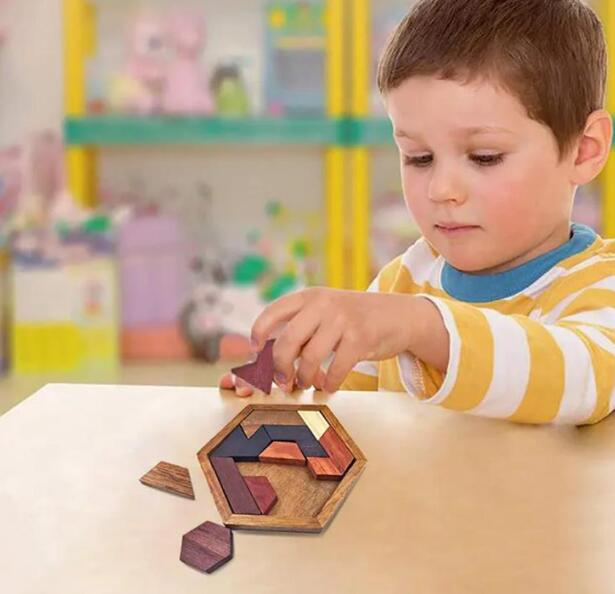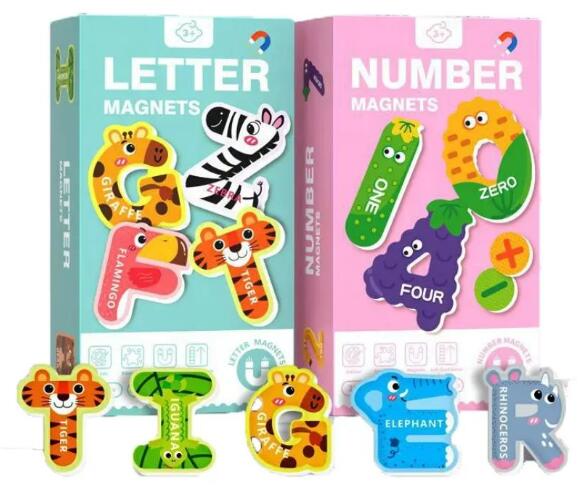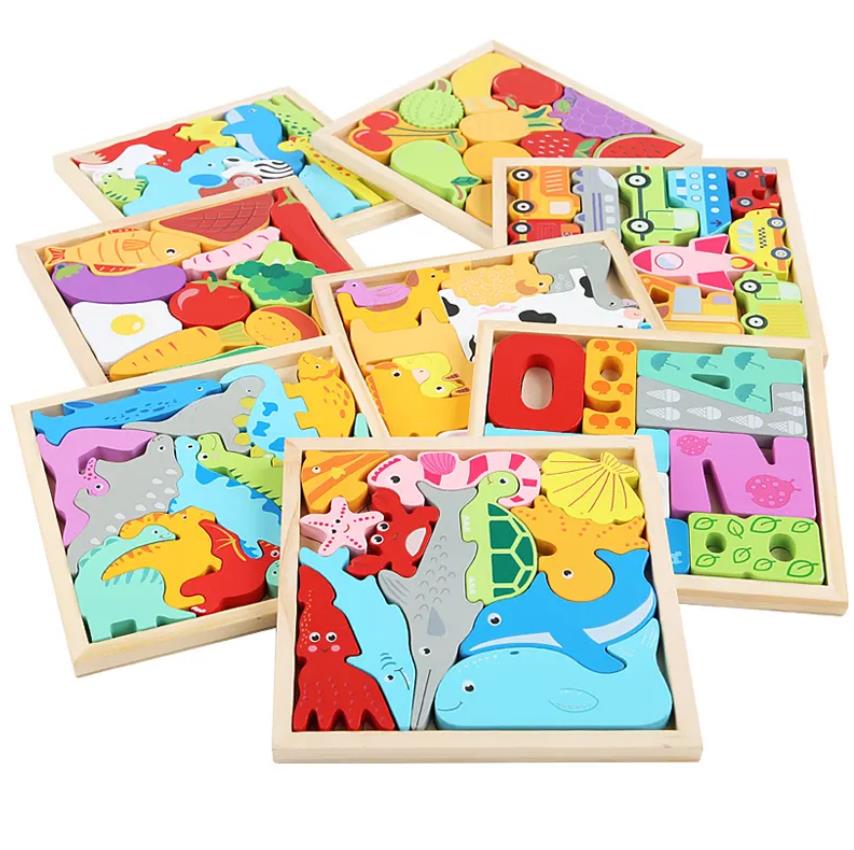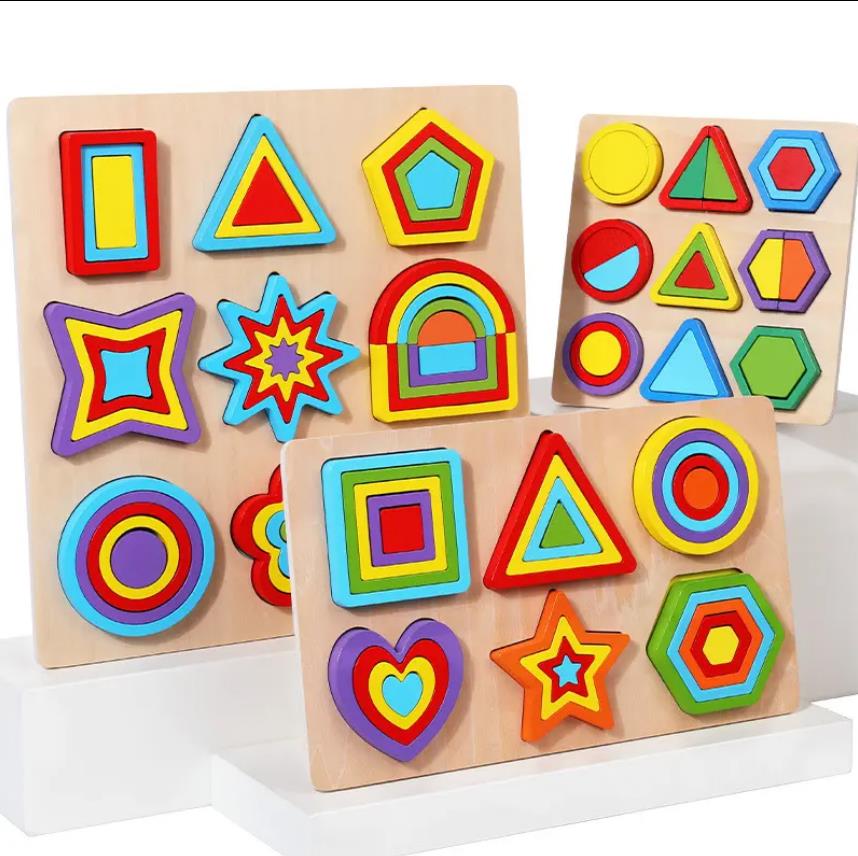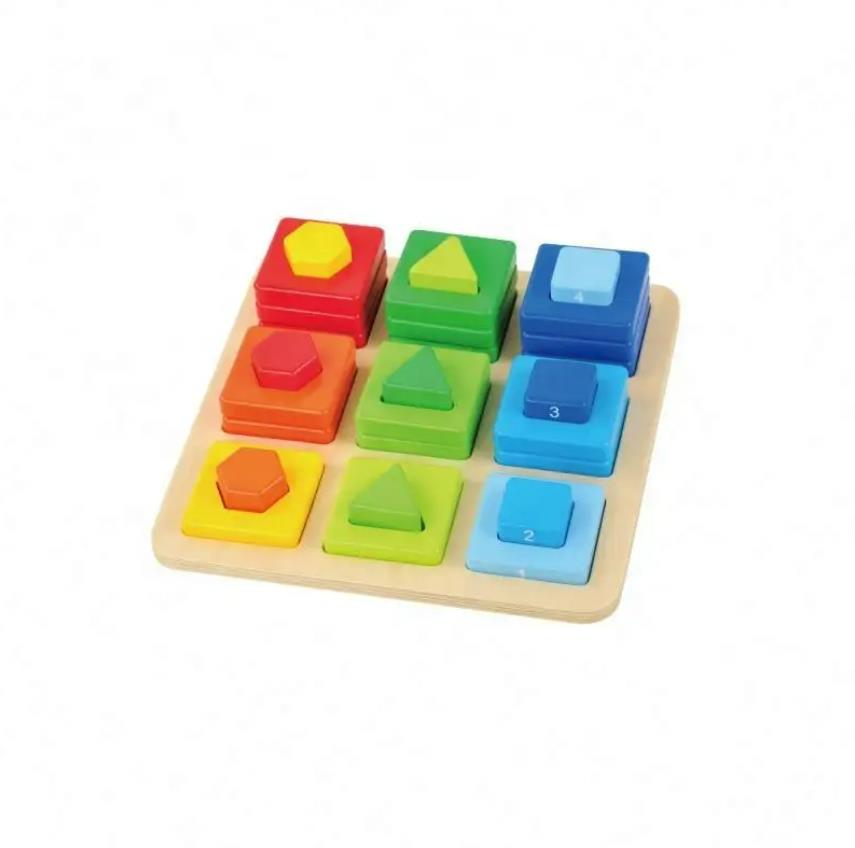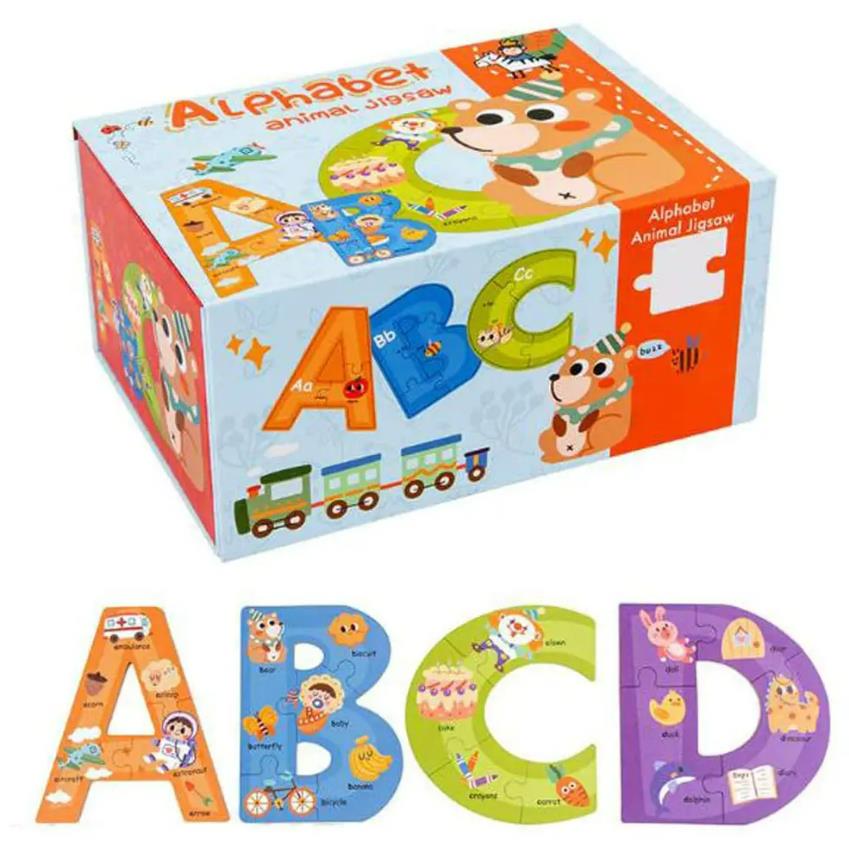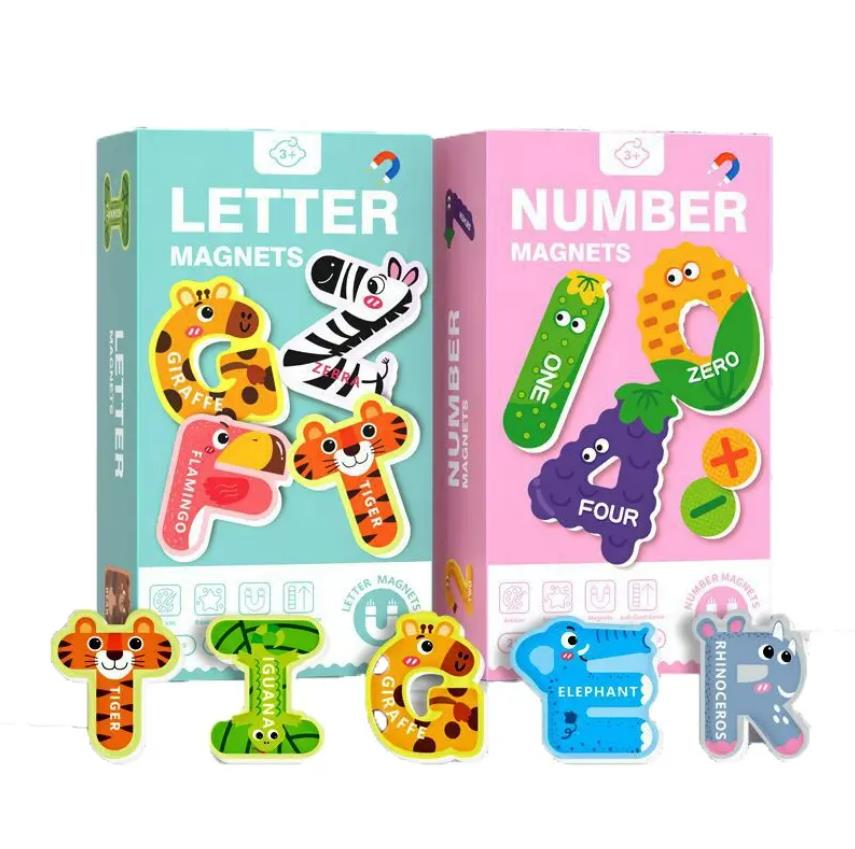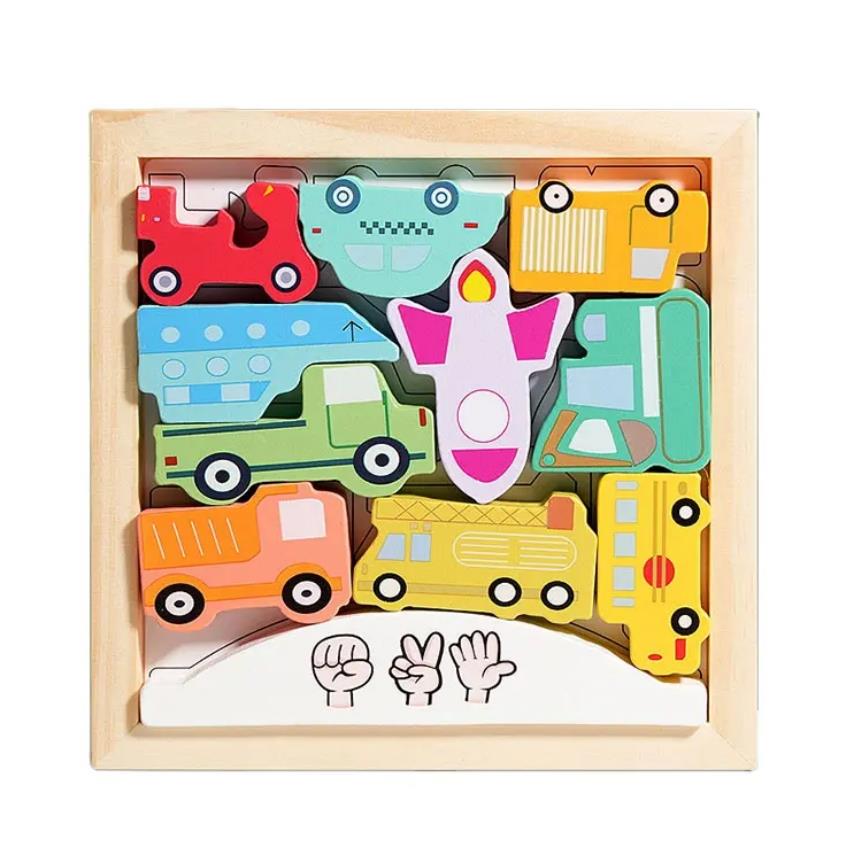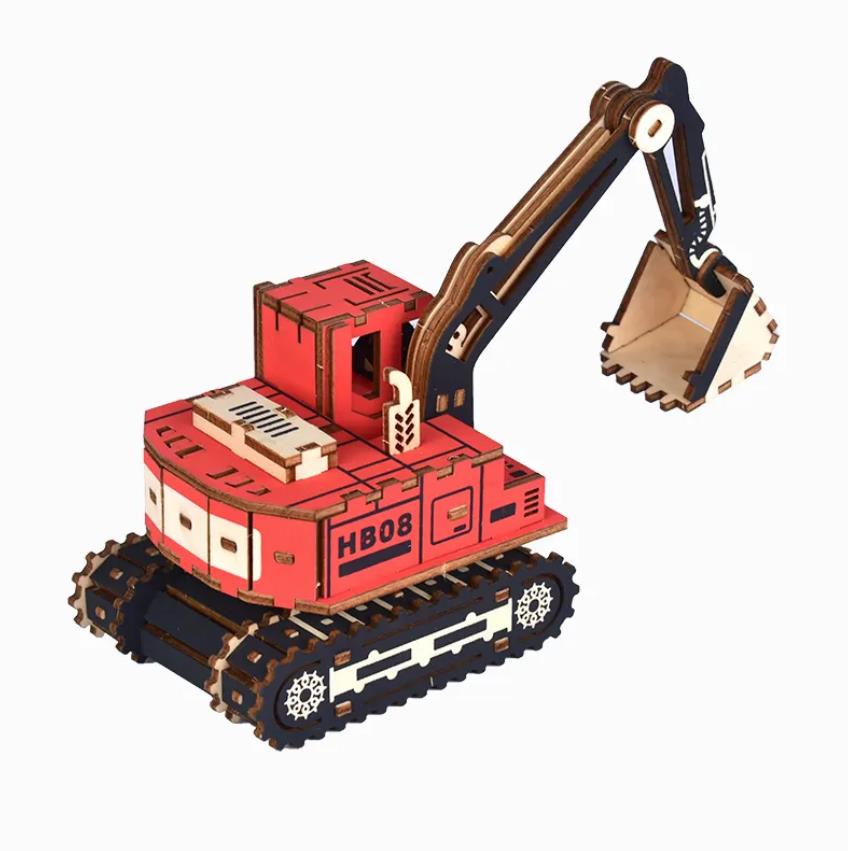The Enduring Value of Wooden Puzzles in Child Development
The Allure of Wooden Puzzles
As parents, we constantly seek toys that offer both enjoyment and lasting benefit for our children. This is precisely where wooden puzzles truly shine. Their innate tactile quality makes each piece a delight for tiny hands, offering a sensory experience plastic alternatives simply can't replicate. The distinct texture and heft of each wooden component encourage deeper engagement, honing a child's tactile and sensory processing skills.
What’s more, wooden puzzles boast incredible durability. They are built to withstand the rigors of enthusiastic play, ensuring they remain functional and charming through countless assemblies and disassemblies. This inherent robustness makes them a sensible choice for families on a budget, and a smart long-term investment in a child’s developmental journey.
Why Opt for Wooden Puzzles?
When considering the value of wooden puzzles, focus on their enduring usefulness and safety. Unlike many fleeting toys, wooden puzzles evolve with a child's changing developmental needs. Simple peg puzzles help toddlers refine their grip and manipulative abilities, while more intricate jigsaw puzzles later present challenges vital for cognitive growth and problem-solving.
Safety is another compelling reason to choose wood. High-quality wooden puzzles are typically non-toxic and free from harsh chemicals often found in plastic, offering peace of mind as children explore their world, often by mouthing objects. Beyond durability and safety, wooden puzzles specifically foster fine motor skills as little fingers learn to precisely position each piece. This practice significantly enhances dexterity and hand-eye coordination, crucial for skills like writing, dressing, and other precise activities. The solid wooden pieces maintain their form, even with repeated use.
Furthermore, the process of completing a wooden puzzle offers immense satisfaction. The clear objective of forming a complete picture, achieved step-by-step, provides instant visual reinforcement and a sense of accomplishment.
- Wooden cartoon animal traffic 3D puzzle
Cognitive Advantages of Wooden Puzzles for Toddlers
Wooden puzzles are far more than just playroom filler; they are instrumental in fostering significant cognitive development in young children. As kids fit puzzle pieces, they're not merely assembling an image; they're sharpening their problem-solving capabilities and overall cognitive functions. This activity necessitates critical thinking and strategic planning, such as deciding which piece goes where, providing an excellent early lesson in logical reasoning and decision-making.
Puzzles also play a pivotal role in cultivating spatial awareness. Children must discern different shapes and understand how they fit within a given space, which improves their ability to judge distances and spatial relationships. This proficiency is essential not only academically but in everyday tasks. The adjustable difficulty of wooden puzzles makes them an ideal tool for continually sharpening young minds as their cognitive abilities mature.
Nurturing Fine Motor Skills and Hand-Eye Coordination
The simple act of manipulating wooden puzzle pieces and placing them accurately significantly contributes to the development of fine motor skills and hand-eye coordination. Every puzzle piece presents a challenge for small hands and fingers, requiring precise maneuvering for a perfect fit. This action improves dexterity, a critical skill for future activities like writing, tying shoes, and using utensils.
Simultaneously, hand-eye coordination improves as children visually identify where a piece belongs and then coordinate their hand movements to place it correctly. The immediate feedback of a piece clicking into place reinforces their learning through sensory input, making wooden puzzles a valuable educational resource for early learners.
The Rewards of Problem Solving and Persistence
Wooden puzzles present a clear, tangible challenge: complete the image. This task encourages children to engage in trial and error—a foundational learning strategy. As they experiment with different approaches to solving the puzzle, they learn the value of perseverance. Each unsuccessful attempt teaches them to adapt their strategy, fostering flexible thinking and adaptability in problem-solving.
Furthermore, the journey from beginning to end of a puzzle is deeply gratifying, instilling a strong sense of achievement and self-assurance. Placing the final piece and seeing the completed picture is not just a moment of joy, but a significant boost to their self-esteem. It reinforces their persistence, demonstrating that sticking with a challenge leads to success. This vital lesson in perseverance prepares children for the many challenges they will encounter as they grow.
Through the engaging process of solving wooden puzzles, children acquire essential life skills such as problem-solving, tenacity, and overcoming hurdles, all while having fun and feeling accomplished. This elevates wooden puzzles beyond mere playtime activities, making them a fundamental component of early childhood education that supports cognitive, physical, and emotional growth.
- Wooden Puzzle - World Landmarks - Travel Kids Adults Unique Shaped Pieces Wooden - KIDBU
Educational Impact of Puzzles in Early Cognitive Development
A frequent query from parents is, "At what age should a child manage a wooden puzzle?" While development varies, toddlers can typically begin with basic wooden puzzles around one year old. These initial puzzles often feature large pieces and simple designs, helping them grasp the fundamental concept of fitting shapes into designated spots. As children mature and their skills advance, they can progress to more intricate puzzles with a greater number of smaller, detailed pieces.
Puzzles are critical in early childhood education, imparting diverse skills essential for cognitive development. For instance, shape recognition is enhanced as children learn to identify and categorize pieces. This skill is intricately linked to memory and the ability to follow sequences, as children recall previous attempts and plan their next moves. This process not only builds cognitive abilities but also prepares them for more structured learning environments where these competencies are vital.
Puzzles and Social Growth
Collaborative puzzle play can also yield substantial social benefits. This cooperative activity is an excellent way for children to acquire social skills like sharing, taking turns, and effective communication. As they work together to solve a puzzle, they must voice their ideas, listen to others, and sometimes negotiate which piece to place next. This type of interaction is invaluable for teaching them how to work as part of a team.
Moreover, puzzles demand patience and perseverance, especially as their complexity increases. In a group setting, children learn to manage frustration and offer encouragement to one another, fostering a sense of community and mutual support. These experiences are fundamental, teaching children the importance of persistence and the rewards of collective effort.
Sensory Engagement and Emotional Well-being
Wooden puzzles are not only mentally stimulating but also provide rich sensory experiences crucial for early childhood development. The diverse shapes, textures, and colors of wooden puzzle pieces engage a child’s senses in unique ways. Feeling the wood grain, observing the vibrant hues, and even hearing the satisfying click of a piece fitting into place can be deeply rewarding and stimulating.
The emotional benefits of puzzle play are equally significant. Successfully completing a puzzle instills a profound sense of accomplishment, boosting a child's self-confidence and self-esteem. This feeling of success is vital for young children, encouraging them to embrace new challenges and believe in their own capabilities. The joy and pride derived from solving a puzzle are not merely about play; they are foundational elements for a child's overall emotional resilience and motivation.
By integrating puzzles into early education, we equip children with a fun and engaging tool that supports their cognitive, social, and emotional growth. These advantages underscore why puzzles are more than just toys; they are key instruments in shaping young minds and preparing them for future academic and personal success.
- Jigsaw Geometric Shape Hobby Children Board
Addressing Common Puzzle Questions
As a parent, you might have questions about the cost, advantages, and overall value of including puzzles in your child's playtime. Let's tackle some frequent inquiries that may arise when selecting the best puzzles for your little ones.
Why are puzzles often expensive?
When considering the price of a high-quality puzzle, especially a wooden one, it's important to understand the craftsmanship involved. The skill and care in designing and manufacturing a durable wooden puzzle justify the cost. These puzzles are frequently made from premium, child-safe materials and are built to endure. Unlike mass-produced plastic toys, wooden puzzles are typically made with meticulous attention to detail, ensuring perfect fits and resilience against the trials of toddler hands and time. This level of craftsmanship not only guarantees the puzzle can be enjoyed by future generations but also promotes sustainable play by reducing waste.
Are puzzles beneficial for ADHD? Which puzzles enhance brain function most?
Puzzles can be particularly helpful for children with Attention Deficit Hyperactivity Disorder (ADHD), providing a focused outlet for their energy and attention. Engaging with puzzles aids in improving concentration and task persistence. They require a child to slow down, concentrate, and practice patience. For optimal brain development and cognitive function, complex jigsaw puzzles that involve sorting and connecting numerous pieces are excellent. They stimulate critical thinking, improve spatial reasoning, and enhance problem-solving skills, making them not only beneficial for the brain generally but also ideal for building essential cognitive reserves in children with ADHD.
Are puzzles healthy? Do they benefit the brain?
Absolutely, puzzles are healthy and offer multiple cognitive advantages. Engaging with puzzles boosts mental flexibility and memory, and contributes to building neural connections that help maintain cognitive vitality. Puzzles also teach logical thinking and problem-solving skills, which are crucial in both academic settings and daily life. For mental well-being, the act of completing a puzzle can be incredibly calming and meditative, helping to reduce anxiety and providing a profound sense of achievement and satisfaction. The focus required to solve a puzzle can redirect the mind from negative stressors, allowing for relaxation. This can be especially beneficial for busy parents seeking a peaceful break in their hectic schedules, and for children needing a calm, absorbing activity.
Maximizing Puzzle Time
Integrating puzzle time into your family routine can be both delightful and educational. Here are some suggestions on choosing the right puzzle for your child's age and abilities, along with ideas for making puzzle time a cherished family tradition.
Choosing the Right Puzzle for Your Child’s Age and Skill Level
- For Toddlers (1-3 years old): Begin with large peg puzzles that have just a few pieces. These are easy for little hands to manage and are perfect for introducing the fundamental concept of fitting pieces into designated spaces.
- For Preschoolers (3-5 years old): Gradually increase the challenge with puzzles featuring more pieces and smaller sizes. Look for puzzles with vivid, captivating images that align with their current interests, such as animals, vehicles, or fairy tales.
- For School-age Children (5+ years): Challenge them with more intricate puzzles that have many pieces and detailed designs. These could include maps, space themes, or complex nature scenes, offering not only a fun challenge but also introducing educational content.
Creative Ideas for Family Puzzle Time
- Puzzle Gatherings: Designate a weekly family puzzle night. Create a cozy, inviting atmosphere where everyone collaborates on a large puzzle. It's a wonderful way to bond and teaches both teamwork and problem-solving.
- Narrative Puzzles: Use the images on puzzles as story prompts. After completing a puzzle, ask your child to create a story about the scene. This boosts creativity and verbal skills, turning the puzzle into an interactive storybook.
- Friendly Competitions: For multiple children, provide each with a puzzle appropriate for their skill level. See who can finish their puzzle first. This can be an exciting way to encourage focus and determination, transforming puzzle-solving into a friendly race.
- Learning through Puzzles: Integrate learning goals into puzzle time. For younger children, discuss colors, numbers, or letters. For older children, explore more complex ideas like geography or science. For example, completing a solar system puzzle can lead to discussions about planets and space exploration.
- Reward System: Implement a small reward system for completing puzzles, especially challenging ones. This could be a simple sticker chart where they earn a sticker for each completed puzzle. After collecting a certain number of stickers, they might earn a special reward, such as choosing the next family movie or a small treat. This fosters persistence and goal-setting.
By adopting these strategies, puzzle time transcends mere play; it transforms into a valuable learning experience that also develops essential cognitive, social, and fine motor skills. Plus, it’s a wonderful way for the family to connect and relax together.
- Cartoon Animal Alphabet Letter Number Magnetic Stickers Funny Learning Jigsaw - KIDBU
The Benefits of Wooden Puzzles
Throughout this discussion, we've explored the diverse benefits of puzzles in childhood development, emphasizing not only their educational value but also their crucial role in enhancing young children's cognitive, motor, and social skills. Wooden puzzles , with their natural feel and robustness, provide a richly sensory experience that plastic puzzles simply cannot match. They actively encourage fine motor development, hand-eye coordination, problem-solving abilities, and perseverance.
Furthermore, they serve as an excellent tool for teaching children about shapes, colors, and spatial relationships, all while nurturing an environment that promotes learning through trial and error. Beyond their developmental advantages, wooden puzzles represent a safe, eco-friendly choice that can be passed down through generations, becoming treasured family heirlooms filled with memories and learning experiences. This longevity and sustainability make them not only a smart choice for environmentally conscious consumers but also a meaningful gift for young learners.
As we reflect on the role of play in early childhood, wooden puzzles clearly stand out as an invaluable educational resource. They are not merely toys; they are a fundamental component in creating a stimulating and nurturing learning environment. I wholeheartedly encourage all parents, particularly those with toddlers, to discover the wide array of wooden puzzles available. Whether it's a simple peg puzzle for the tiniest hands or a complex jigsaw for older children, there's a wooden puzzle ready to challenge and delight every child, profoundly shaping their learning journey.
Resources
Levine, S., Ratliff, K., Huttenlocher, J., & Cannon, J. (2012). Early puzzle play: a predictor of preschoolers' spatial transformation skill.. Developmental psychology, 48 2, 530-42 . https://doi.org/10.1037/a0025913.
Doherty, M., Wimmer, M., Gollek, C., Stone, C., & Robinson, E. (2020). Piecing Together the Puzzle of Pictorial Representation: How Jigsaw Puzzles Index Metacognitive Development.. Child development. https://doi.org/10.1111/CDEV.13391.
Selectiong By Age
 Languages
Languages
